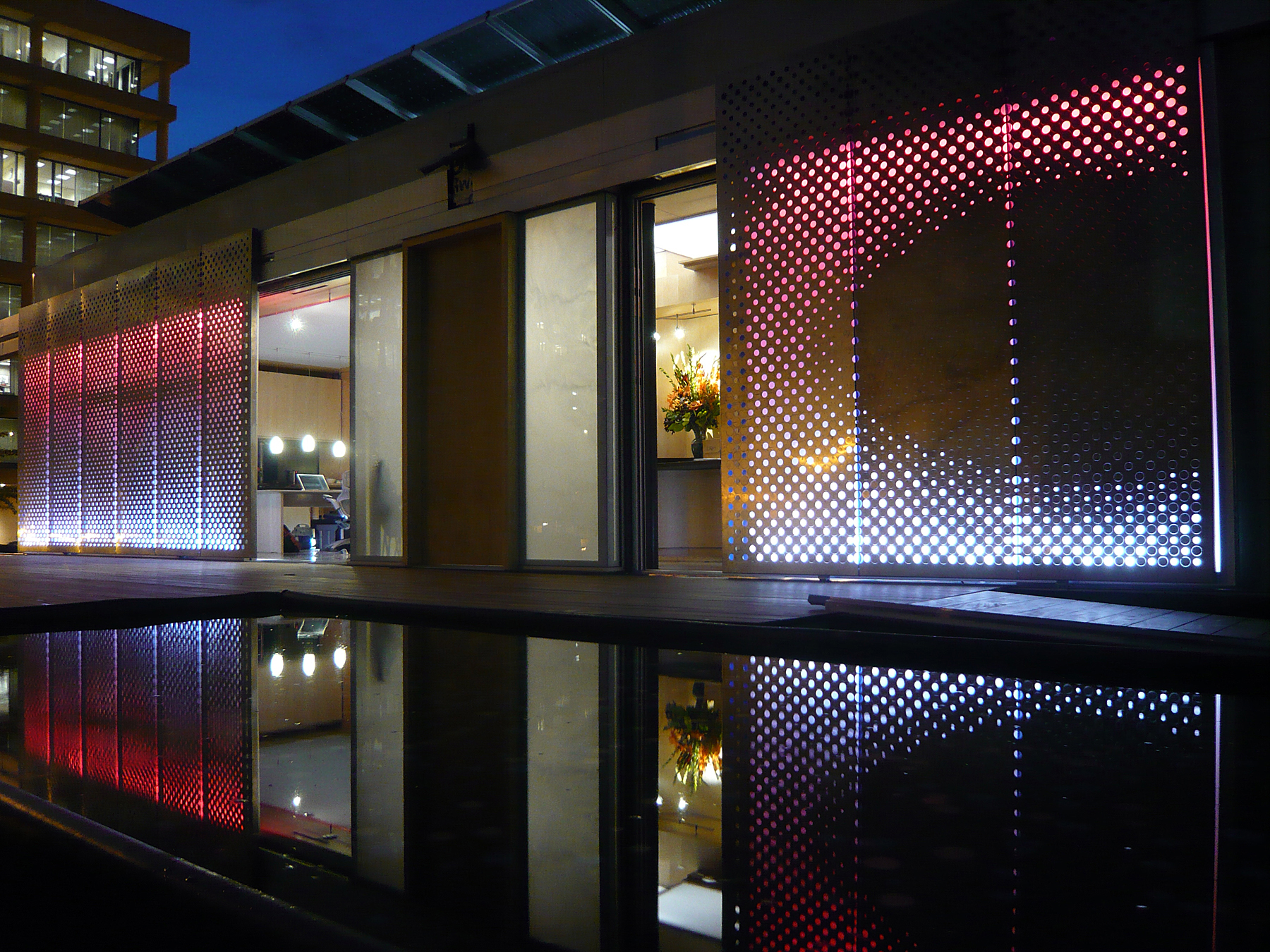Virginia Tech LumenHAUS wins national AIA Honor Award
The team behind the Virginia Tech LumenHAUS has been awarded a 2012 AIA Honor Award for Architecture from the American Institute of Architects. The award is considered among the highest accolades given to practicing architects, and marks the first time a university team has been given the honor.
The innovative solar house, which provides all the amenities of a modern home while drawing no outside electricity, was designed and built by faculty and students from the School of Architecture + Design and other schools within the College of Architecture and Urban Studies as well as several departments in the College of Engineering at Virginia Tech.
"It is truly remarkable that our academic team can compete and win against the top professional architecture firms in the country. This is one of the highest honors we can achieve as architects and designers." comments Joseph Wheeler, associate professor of architecture in the School of Architecture + Design who led the project along with fellow faculty members Robert Dunay, David Clark, and Robert Schubert. “This national recognition is captivating for the students and faculty who worked on the project,” said Dunay. “It confirms the integration of teaching research to create a work of architecture in the context of world issues.”
College of Architecture and Urban Studies Dean Jack Davis said, "This outstanding academic team has placed design research and the practice of architecture at the highest level in both the national and international arenas. [Virginia Tech's LumenHAUS] is not simply testing an idea until it appears to work; this is the sharing of critical knowledge through excellence in design, detailing, and construction for the greater public good."
A nine-person jury of architects from some of the top architectural firms across the country gave the award to the solar house team, one of nine projects selected for an award over approximately 500 other projects nominated for the honor. The jury called the solar house “both a dwelling and an exhibition informing the public about issues of alternative energy and sustainability,” praised its “creative use of materials and the flexibility of its components (that) quickly respond to changes in the environment through automated systems that optimize energy consumption.”
The jury also cited the way the house’s plan and section are “orchestrated by light and materials to enhance the perception of a small footprint,” and how its interior is “cleverly designed with comfortable if compact spaces, compatible materials, and a rationale and clear layout.”
“It intensifies our imagination of a future that builds on the experience of [the house] and the Center for Design Research in the School of Architecture + Design.” says Schubert, the associate dean for research for the college.
Clark adds that “receiving this award substantiates the efforts we are taking to put design research into practice.”
The solar house has already received numerous accolades. In June 2010, the solar house won the Solar Decathlon Europe competition in Madrid, Spain, triumphing over 16 international research universities. It also received first place honors in the architecture category for that event by competition juror and Pritzker Prize winner, Glen Murcutt.
Virginia Tech's solar house has been well-traveled since it was finished in 2009. After being featured in the Greenovation: Sustainable Communities exhibition at the National Building Museum in Washington, D.C., during fall 2009, the house traveled to Times Square in Manhattan, where it was featured on Good Morning America. The solar house has also been exhibited in Chicago’s Millennium Park for the U.S. Green Building Council’s (USGBC) Greenbuild Sustainability Conference in November 2010 and spent the summer of 2011 on the grounds of Farnsworth House, Mies Van der Rohe’s masterpiece that was a seminal inspiration for the Virginia Tech solar house's unique design.
CNN, ESPN, and the New York Times were among many news outlets from around the world have that reported on the energy-saving home.
The house is currently on the campus of Virginia Tech and is open for tours by appointment.





